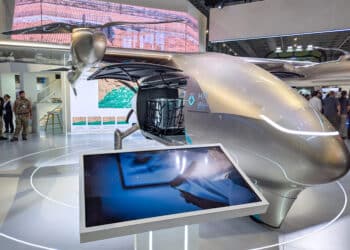Patent for hive-like urban drone warehouse hints at Amazon’s e-commerce strategy
A patent application for an urban drone delivery warehouse filed by Amazon.com provides a glimpse at the e-commerce giant’s potential plans for large-scale drone delivery, and it has set the logistics industry abuzz with last-mile speculation.

In addition to looking like a beehive, the latest concept drawn up by Amazon’s engineers also emulates the hive’s rigid security, with landing platforms that authenticate drones via a wireless communication system before allowing them to enter. The apiary comparisons extend to the warehouses interior, where robots would undertake the majority of the multi-level restocking, packing, and even servicing and maintaining the fleet of drones.
Currently, however, there are no indications as to whether Amazon plans to pursue this specific drone delivery system design in any real-world scenarios. After all, Amazon is known for patenting unusual ideas that are not guaranteed to see the light of day. This latest patent, for instance, follows a filing last year for a “floating warehouse” that could move to retail hot-spots like sports events and concerts. In this latest filing, published June 22 by the U.S. Patent and Trademark Office, Amazon is again adapting to local conditions, with the potential to anchor this beehive warehouse concept offshore, near urban centers.
By locating these hypothetical facilities in urban centers, Amazon has also raised the possibility of self-service, “for customers to pick-up items in person rather than have the items delivered to the customers.” In the filing, Amazon noted that items could be “temporarily stored” in the self-service location, “such as in lockers or in a room accessible by one or more staff that provides the items to customer.”
Amazon’s latest warehouse patent is well ahead of where it’s drone program actually is in mid-2017. In December 2016, the company made its first commercial drone delivery in the British countryside. The delivery lasted 13 minutes, and covered about two miles. While the program is presumably still under way, there are no reports of it expanding.
Although technology does exist for far more sophisticated deliveries, regulations, especially in the United States, are checking the company’s ambitions. Currently, U.S. drone operators are required to maintain line-of-sight control over drones, precluding the sort of deliveries that Amazon would launch from its latest hive warehouse.
Amazon is betting that regulations will change in the not-too-distant future. Drone manufacturers and operators have stepped up their efforts to sway the Trump administration, hoping to translate the President’s penchant for cutting regulations into a more conducive operating environment.




